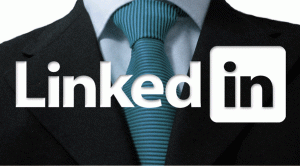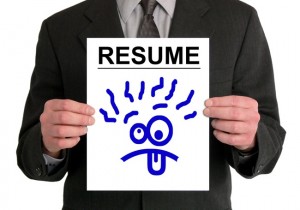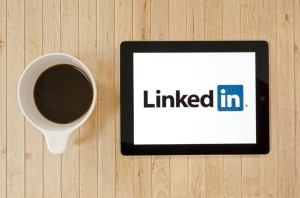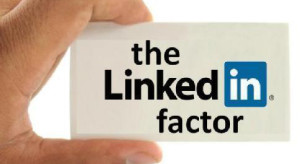Your #Career : Do This To Write A More #EmotionallyIntelligent #LinkedInProfile ….Don’t just List Out Skills Associated with Emotional Intelligence. Here’s How to Adapt a Technique from Psychology to appear More Approachable on LinkedIn.
LinkedIn is a great place to network and look for jobs, but a lot of people’s profiles feel stiff and standoffish–at least compared with other social media platforms. We talk all the time about the rising value of emotional intelligence in the workforce, and there’s lots of advice on how to show it off on a job interview.
But that doesn’t often carry over to LinkedIn, which often just presents a litany of information about people’s accomplishments: what they’ve done, which jobs they’ve worked, the schools they’ve attended. It’s hard to get a sense of who they are. Ideally, your LinkedIn account should be just as good at making interpersonal connections as you are in real life. Here’s how to get that to happen.
Related: This LinkedIn Recruiter’s Tips For Showcasing Soft Skills On Job Interviews
TWO WAYS TO DESCRIBE YOURSELF
Some of the challenge here is LinkedIn’s format. The easiest things to add to your profile are straightforward data like your employment and education history. Sections like your “Headline” and “Summary” are harder to fill in, because it’s not always clear what you’re supposed to say about yourself.
It’s true that you’ll want to use keywords so recruiters and hiring managers can find you, but it’s also crucial to simply appear personable. And to do that, it helps to understand some of the psychology around how people define themselves. Researchers on self-concept have found that we typically use two distinct modes, called “self-construals.”
An “independent self-construal” involves defining your sense of self in terms of the qualities you possess without reference to other people. If you describe yourself as smart, a hard worker, or someone who gets things done, then you’re focusing on independent properties–the stuff that has to do with just you. With an “interdependent self-construal,” on the other hand, you define yourself according to the qualities that do refer to others. If your self-concept prominently includes your role as a parent, then you’re prioritizing your relationship with your kids. If you describe yourself as a mentor, then your sense of self arises from your experiences interacting with them.
If you look at many LinkedIn profiles (my own included), some will be heavier on independent self-construals than interdependent ones, and vice versa. One isn’t necessarily “better” than the other in every context; some cultures (both within a given organization and across entire societies) lean more individualist than collectivist, so what flies in one environment may weigh you down in another. And in a more in individualistic culture, researchers have found that people are more prone to independent self-construals. Generally speaking, though, if you describe yourself in more interdependent terms, then other people will likely feel more welcomed by you.
It’s pretty intuitive, really: If you include your reader in part of the self-construal you present on LinkedIn, they’ll have a better chance of seeing how they can relate to you.
Like this Article ? Share It ! You now can easily enjoy/follow/share Today our Award Winning Articles/Blogs with Now Over 2.5 Million Growing Participates Worldwide in our various Social Media formats below:
FSC LinkedIn Network: www.linkedin.com/in/fscnetwork
Facebook: http://www.facebook.com/pages/First-Sun-Consulting-LLC-Outplacement-Services/213542315355343?sk=wall
Google+: https://plus.google.com/115673713231115398101/posts?hl=en
Twitter: Follow us @ firstsunllc
Question: Want the ‘the best/current articles/blogs on the web’ on Job Search, Resume, Advancing/Changing your Career, or simply Managing People?
Answer: Simply go to our FSC Career Blog below & type(#career, #leadership, #life) in Blog Search: https://www.firstsun.com/fsc-career-blog/
What Skill Sets do You have to be ‘Sharpened’ ?
Continue of article:
REVERSE-ENGINEERING AN EMOTIONALLY INTELLIGENT LINKEDIN PROFILE
How do you actually put this into practice? Work backwards.
For decades, psychologists have used the so-called “Twenty Statements Test,” one of a few leading instruments to assessing people’s self-concepts. It’s extremely simple: The test requires you to come up with 20 different answers to the question, “Who am I?” Instead of answering this question generally, though, answer it for your work-self–that is, “Who am I at work?”
Chances are many of the descriptions you come up with for yourself are independent, but you’ll probably also hit upon a few that are interdependent as well. Now go back through your list and see if there are ways of turning some of the independent descriptors you used into interdependent ones: How does this skill or attribute you possess help or relate to that other person?
This exercise can leave you with a richer, more conversational means of describing yourself than just listing out the job skills associated with emotional intelligence. As you rewrite your headline, summary, and other sections on LinkedIn, hang onto that interdependent mind-set. It’ll make you seem more approachable and worth connecting with.
FastCompany.com | March 19, 2018 | BY ART MARKMAN 3 MINUTE READ










